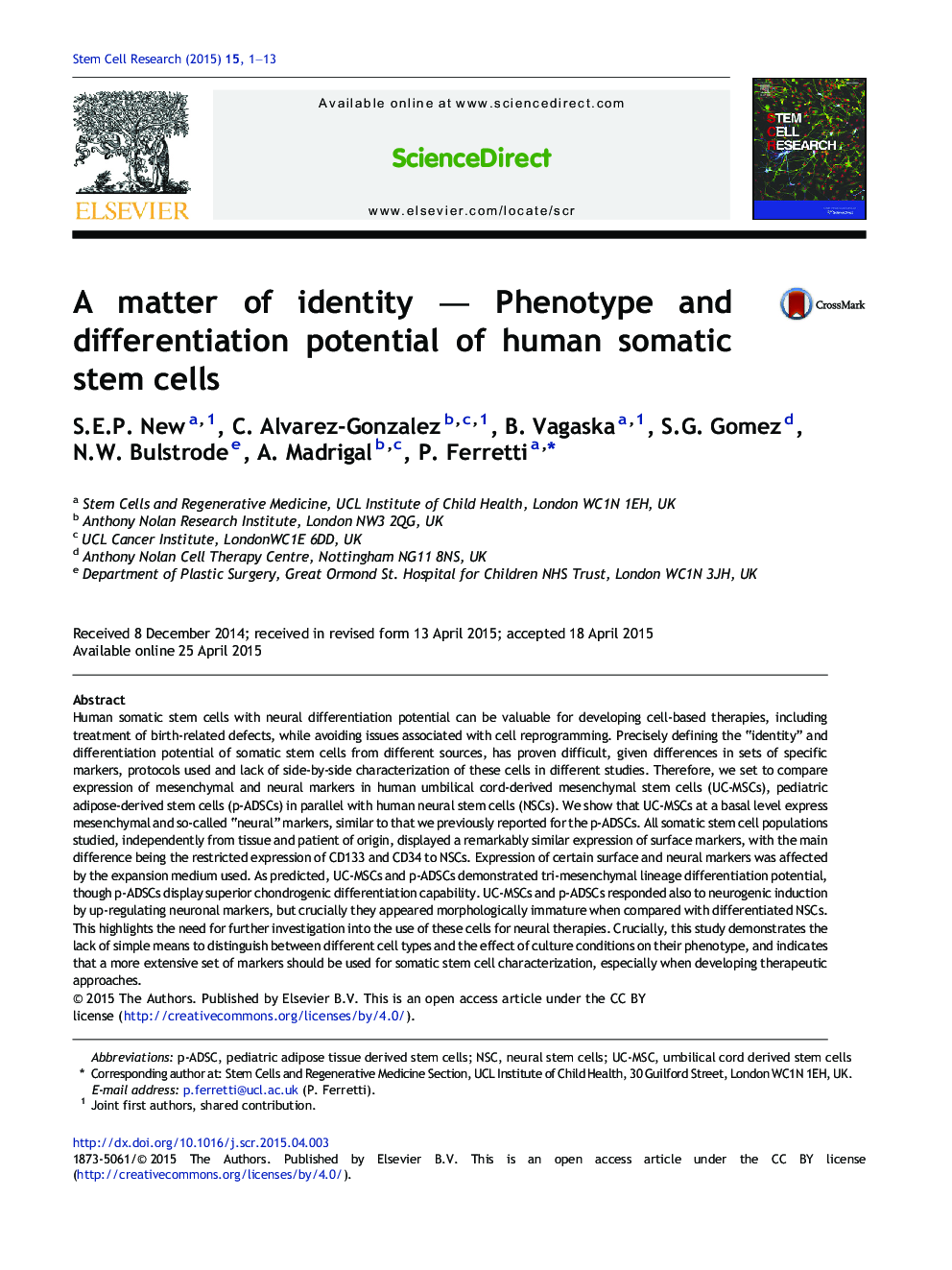| Article ID | Journal | Published Year | Pages | File Type |
|---|---|---|---|---|
| 2094067 | Stem Cell Research | 2015 | 13 Pages |
•Tighter phenotyping criteria of human adipose (ADSC), umbilical cord (UCMSC) and brain (NSC)-derived stem cells are needed.•The human umbilical cord does not express markers found in UCMSC that appear to be modulated by culture conditions.•ADSC may provide a better somatic stem cell source than UCMSC for autologous cartilage reconstruction in children.•ADSC and UCMSC do not produce a mature neuronal phenotype comparable to that of NSC, though they up-regulate neural markers.
Human somatic stem cells with neural differentiation potential can be valuable for developing cell-based therapies, including treatment of birth-related defects, while avoiding issues associated with cell reprogramming. Precisely defining the “identity” and differentiation potential of somatic stem cells from different sources, has proven difficult, given differences in sets of specific markers, protocols used and lack of side-by-side characterization of these cells in different studies. Therefore, we set to compare expression of mesenchymal and neural markers in human umbilical cord-derived mesenchymal stem cells (UC-MSCs), pediatric adipose-derived stem cells (p-ADSCs) in parallel with human neural stem cells (NSCs). We show that UC-MSCs at a basal level express mesenchymal and so-called “neural” markers, similar to that we previously reported for the p-ADSCs. All somatic stem cell populations studied, independently from tissue and patient of origin, displayed a remarkably similar expression of surface markers, with the main difference being the restricted expression of CD133 and CD34 to NSCs. Expression of certain surface and neural markers was affected by the expansion medium used. As predicted, UC-MSCs and p-ADSCs demonstrated tri-mesenchymal lineage differentiation potential, though p-ADSCs display superior chondrogenic differentiation capability. UC-MSCs and p-ADSCs responded also to neurogenic induction by up-regulating neuronal markers, but crucially they appeared morphologically immature when compared with differentiated NSCs. This highlights the need for further investigation into the use of these cells for neural therapies. Crucially, this study demonstrates the lack of simple means to distinguish between different cell types and the effect of culture conditions on their phenotype, and indicates that a more extensive set of markers should be used for somatic stem cell characterization, especially when developing therapeutic approaches.
